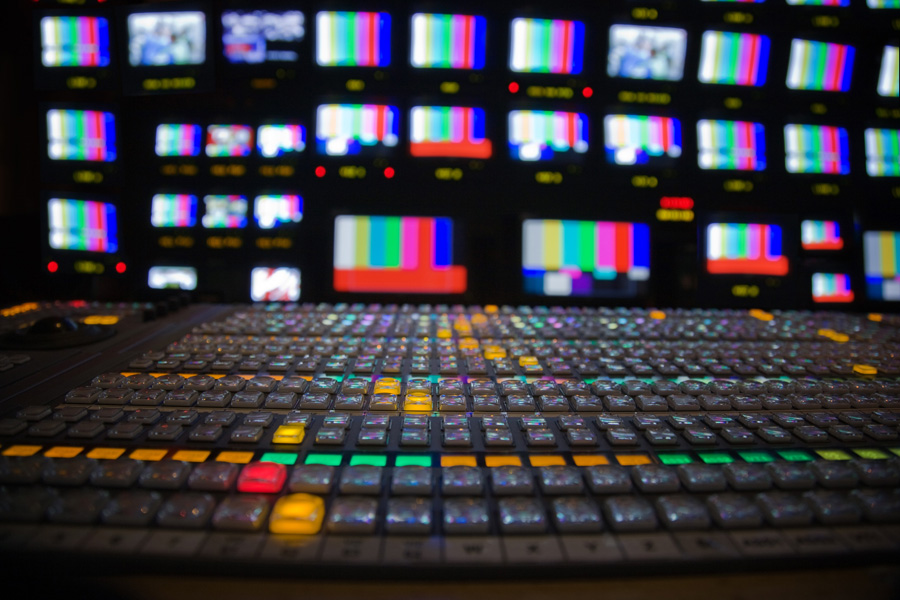How audio visual charlotte nc simplifies event execution
Wiki Article
Comprehending the Inclusion of Audio Visual Modern technology in Today's Educational Environments
The assimilation of audio-visual technology in academic settings has transformed the training and finding out process. Educators currently have access to devices that accommodate various learning designs, enhancing trainee involvement and cooperation. The incorporation of these technologies presents both opportunities and challenges. Comprehending how to successfully carry out these devices is important. What strategies can instructors utilize to maximize the advantages of audio-visual technology in their classrooms?The Advancement of Audio-Visual Technology in Education And Learning
As academic demands evolved over the decades, audio-visual technology underwent substantial changes that reshaped the discovering atmosphere. Originally, devices such as film projectors and slide shows were the main ways of integrating visual components right into class. These very early technologies offered teachers with the capability to present details dynamically, yet they were limited in ease of access and interactivity.With the advent of video clip cassette recorders in the 1970s, class started to include recorded lessons, expanding the extent of educational sources. The introduction of desktop computers in the 1980s additional reinvented this landscape, permitting the production of multimedia discussions and interactive learning experiences.
The increase of the internet in the 1990s marked a pivotal minute, allowing real-time accessibility to a wealth of audio-visual materials. Today, digital tools such as interactive white boards and on-line discovering systems remain to boost the educational experience, fostering interaction and partnership amongst students.
Advantages of Audio-Visual Tools for Diverse Knowing Styles
Audio-visual tools play an essential role in satisfying diverse learning designs by improving aesthetic understanding and enhancing auditory engagement. By including photos, video clips, and noise, these technologies produce an even more inclusive instructional setting. This diverse technique allows educators to address the different choices and needs of trainees efficiently.Enhancing Visual Knowing
Engagement in the learning procedure is substantially improved with using audio-visual devices, satisfying various learning designs. These devices, such as videos, infographics, and interactive presentations, offer aesthetic stimuli that aid comprehension and retention. Aesthetic learners, in certain, take advantage of the unification of pictures and computer animations, which can simplify intricate principles and enhance understanding. Additionally, audio-visual sources can highlight real-world applications, making discovering more pertinent and interesting. By incorporating color, activity, and noise, instructors can develop a dynamic understanding environment that captures students' focus and fosters deeper cognitive connections. Eventually, the calculated use of audio-visual modern technology not just supports aesthetic knowing however likewise improves the total academic experience for varied students.Improving Auditory Involvement
A substantial benefit of including audio-visual tools in education and learning is their ability to improve auditory involvement among pupils. These devices, which incorporate multimedia presentations, podcasts, and interactive audio components, deal with different learning styles, specifically benefiting acoustic students (audio visual charlotte nc). By integrating audio and narration, educators can produce immersive experiences that record students' focus and reinforce comprehension. This involvement is vital, as it fosters a deeper understanding of the product and advertises retention. Additionally, audio-visual tools can promote joint discovering settings, encouraging students to take part in conversations and share their understandings. Eventually, the consolidation of audio-visual modern technology not just sustains acoustic interaction yet additionally improves the overall educational experience, making finding out more dynamic and effective for all traineesEnhancing Interaction Via Interactive Discovering

Additionally, gamification elements, such as tests and simulations, can improve inspiration and retention, making discovering more enjoyable and effective. These techniques not just stimulate cognitive engagement but also accommodate diverse knowing styles, guaranteeing that all trainees can participate meaningfully. As a result, interactive understanding atmospheres foster a sense of community and belonging, inevitably causing boosted academic results. Through the combination of audio visual technology, instructors can change typical class into vibrant rooms where pupils flourish and proactively shape their educational journeys.
Linking Concept and Practice With Multimedia Resources
Multimedia sources serve as an important link between theoretical ideas and functional application in academic setups. By boosting engagement, facilitating joint understanding experiences, and sustaining diverse knowing designs, these tools produce a more comprehensive and dynamic knowing environment - audio visual charlotte nc. This approach not only promotes deeper understanding but additionally prepares pupils for real-world difficulties
Enhancing Interaction Via Multimedia
Engagement in instructional setups substantially raises when instructors incorporate multimedia resources into their teaching techniques. Making use of videos, podcasts, and interactive presentations boosts the discovering experience, allowing pupils to connect with the material on multiple degrees. Multimedia resources cater to various learning styles, supplying aesthetic, auditory, and kinesthetic stimulations that can hold pupils' interest extra properly than standard lecture approaches. In addition, these resources can simplify complicated principles, making them a lot more easily accessible and memorable. By integrating multimedia, educators can produce a vibrant classroom setting that fosters interest and motivates learners. Eventually, the strategic use of audio-visual technology serves to bridge the void between academic expertise and sensible application, enriching the educational experience for both trainers and students.Facilitating Collaborative Discovering Experiences
Various researches show that collaborative understanding experiences substantially improve pupil outcomes when integrated with multimedia resources. Multimedia devices promote communication among pupils, permitting them to take part in problem-solving and critical thinking collectively. By utilizing video conferencing, collective platforms, and interactive presentations, teachers produce environments for teamwork and shared learning. These modern technologies enable trainees to interact their ideas successfully and get prompt responses, promoting a much deeper understanding of the subject. On top of that, multimedia resources can present intricate principles in more absorbable styles, advertising discussion and collaboration. As a result, the mix of collective understanding and audio-visual technology not just improves the educational experience however likewise prepares trainees for real-world synergy characteristics, emphasizing the importance of participation and cumulative understanding construction.Sustaining Diverse Discovering Styles
While standard mentor techniques typically deal with a limited variety of discovering preferences, the combination of audio-visual modern technology uses a much more comprehensive technique to education and learning. By employing multimedia resources such as videos, interactive simulations, and digital presentations, instructors can resolve different learning designs, consisting of visual, acoustic, and kinesthetic. This adaptability enables set apart guideline, allowing students to involve with material in manner ins which reverberate with their private preferences. Additionally, audio-visual tools can facilitate deeper understanding by supplying several representations of intricate ideas. Because of this, trainees who may battle with traditional approaches can locate different pathways to success, fostering an extra equitable discovering setting that supports academic accomplishment for all learners.Challenges in Implementing Audio-Visual Innovation
Although audio-visual modern technology holds terrific promise for improving instructional experiences, its application usually comes across considerable challenges. One main concern is the economic burden connected with acquiring and preserving such equipment, which can stress budgets, especially in underfunded establishments. Furthermore, poor training for teachers can prevent effective assimilation, leaving them ill-prepared to utilize the innovation completely. Technical concerns, such as software application breakdowns and compatibility issues, may additionally interrupt lessons and frustrate both instructors and trainees. Additionally, differing levels of trainee accessibility to technology outside the classroom can develop variations in learning opportunities. Lastly, the potential for over-reliance on technology may take away from necessary teaching techniques, eventually restricting the academic experience. Dealing with these obstacles requires a thorough strategy, consisting of sufficient funding, professional development, and equitable access to resources, to guarantee that audio-visual innovation can be leveraged efficiently in today's educational setups.Best Practices for Integrating Innovation in the Class

Additionally, fostering an interactive environment with joint devices urges pupil interaction and engagement. Using diverse audio-visual sources satisfies different learning styles, suiting aesthetic, acoustic, and kinesthetic learners. Regularly examining the influence of innovation on student knowing helps teachers fine-tune their techniques and adjust to altering needs. Ultimately, involving trainees in the choice of technology advertises possession and motivation. By sticking to these best techniques, educators can produce a dynamic classroom ambience that effectively integrates innovation and enhances the educational experience for all trainees.
The Future of Audio-Visual Technology in Education And Learning
As class significantly welcome innovation, the landscape of audio-visual tools in education and learning continues to progress (audio visual charlotte nc). Future improvements are expected to focus on higher interactivity and personalization, allowing educators to customize discovering experiences to private pupil demands. Developments such as increased reality (AR) and online fact (VIRTUAL REALITY) will likely give immersive understanding environments, enhancing pupil involvement and understanding
Furthermore, expert system (AI) is positioned to play a considerable role in audio-visual innovation by providing real-time feedback and adaptive understanding pathways. This assimilation may aid instructors identify and address pupil difficulties more properly. Cloud-based platforms will certainly assist in simpler accessibility to resources and cooperation among students and instructors, despite place.
In addition to these technological breakthroughs, expert development for teachers will be crucial, guaranteeing they are furnished to utilize these tools effectively. Overall, the future of audio-visual innovation in education and learning promises to develop more vibrant, comprehensive, and impactful understanding experiences.
Regularly Asked Concerns
How Can Educators Select the Right Audio-Visual Equipment for Their Classrooms?
Picking suitable audio-visual tools calls for instructors to evaluate their instructional goals, consider trainee needs, assess offered technology, and seek website suggestions from peers or specialists, guaranteeing tools efficiently enhance discovering and involvement within their details class environment.What Budget Considerations Are There for Applying Audio-Visual Modern Technology?
Spending plan considerations for carrying out audio-visual innovation consist of preliminary acquisition costs, maintenance costs, training for team, and possible software licensing costs. Furthermore, lasting financial investment in updates and substitutes must additionally be factored into monetary preparation.Exist Particular Training Resources for Teachers on Audio-Visual Devices?
Several institutions provide training resources for teachers on audio-visual tools, consisting of on the internet programs, workshops, and educational guides. These sources intend to boost instructors' skills and confidence in effectively incorporating technology into their training techniques.Exactly how Do We Gauge the Efficiency of Audio-Visual Technology in Discovering?
Determining the effectiveness of audio-visual technology in discovering involves reviewing student interaction, comprehension, retention prices, and general academic performance. Surveys, assessments, and empirical studies can give useful insights right into its effect on academic results.What Prevail Misconceptions Concerning Audio-Visual Technology in Education And Learning?
Common misunderstandings concerning audio-visual modern technology in education and learning include the idea that it guarantees involvement and discovering end results, in addition to the presumption that all pupils profit similarly, neglecting private discovering choices and demands.Report this wiki page